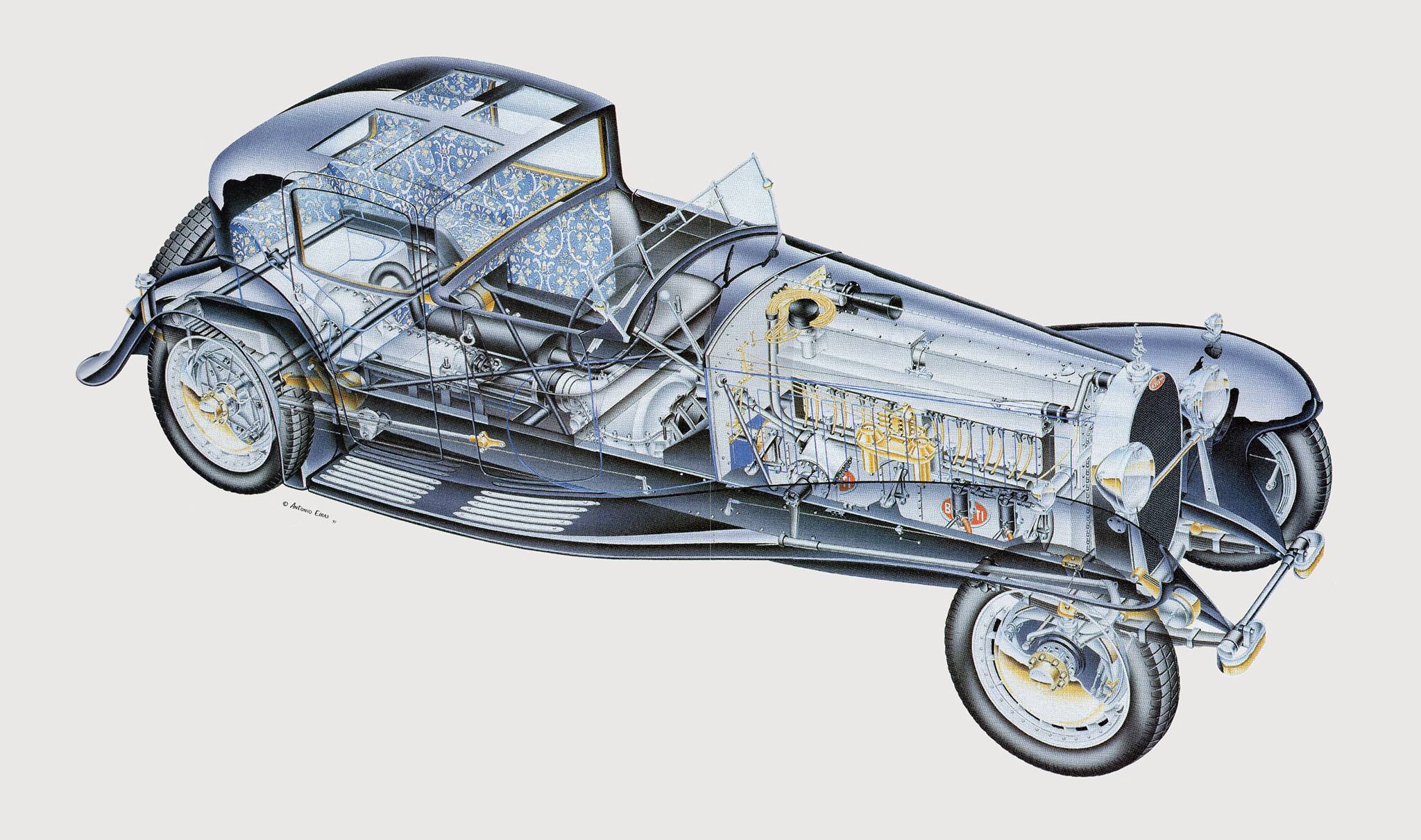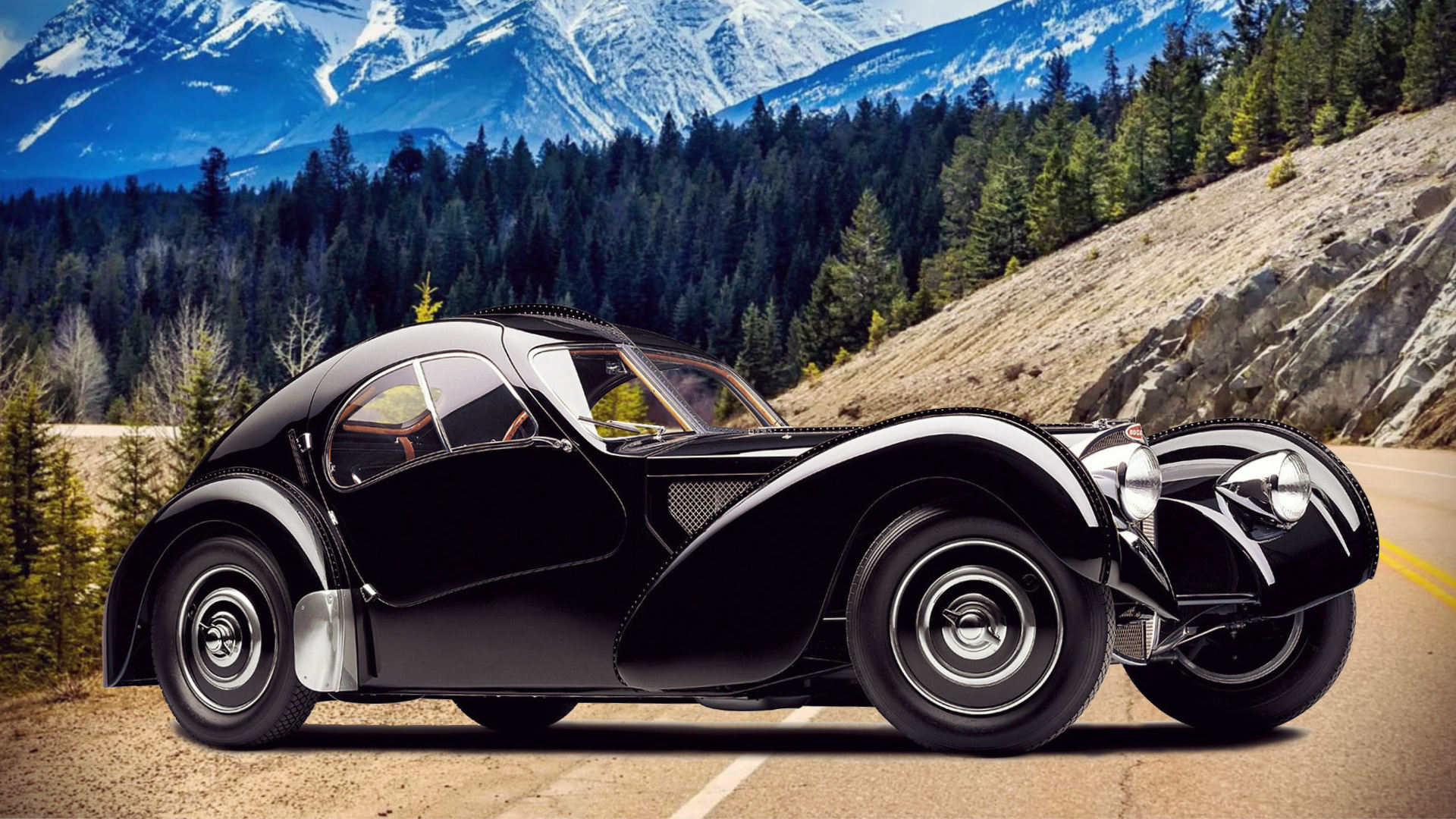Cars We Love & Who We Are #40
With 1939 fast approaching, Romanian playboy Archimedes “Archie” Antonescu had set in motion an extravagant plan. He intended to startle the automotive world by entering a dazzlingly brilliant one-off race prepared Bugatti Royale in the 1939 Monte Carlo Rally. As with many of his fellow competitors, he had chosen to start the rally in Tallinn, Estonian. Tallinn’s great distance from Monte Carlo offered a significant advantage in earning points towards a victory. At the same time Mihkel Oja, the teenage son of an Estonian farmer, found himself embroiled in the political chaos sweeping his native homeland. As a pro-independence activist, Mihkel Oja faced deportation to a labor camp or worse at the hands of either the German Nazi or Soviet Communist forces competing to take control of his country. The lives of both men would be inextricably linked by Archie’s Royale.
In Search of the 7th Royale (Part 4 – The unveiling)
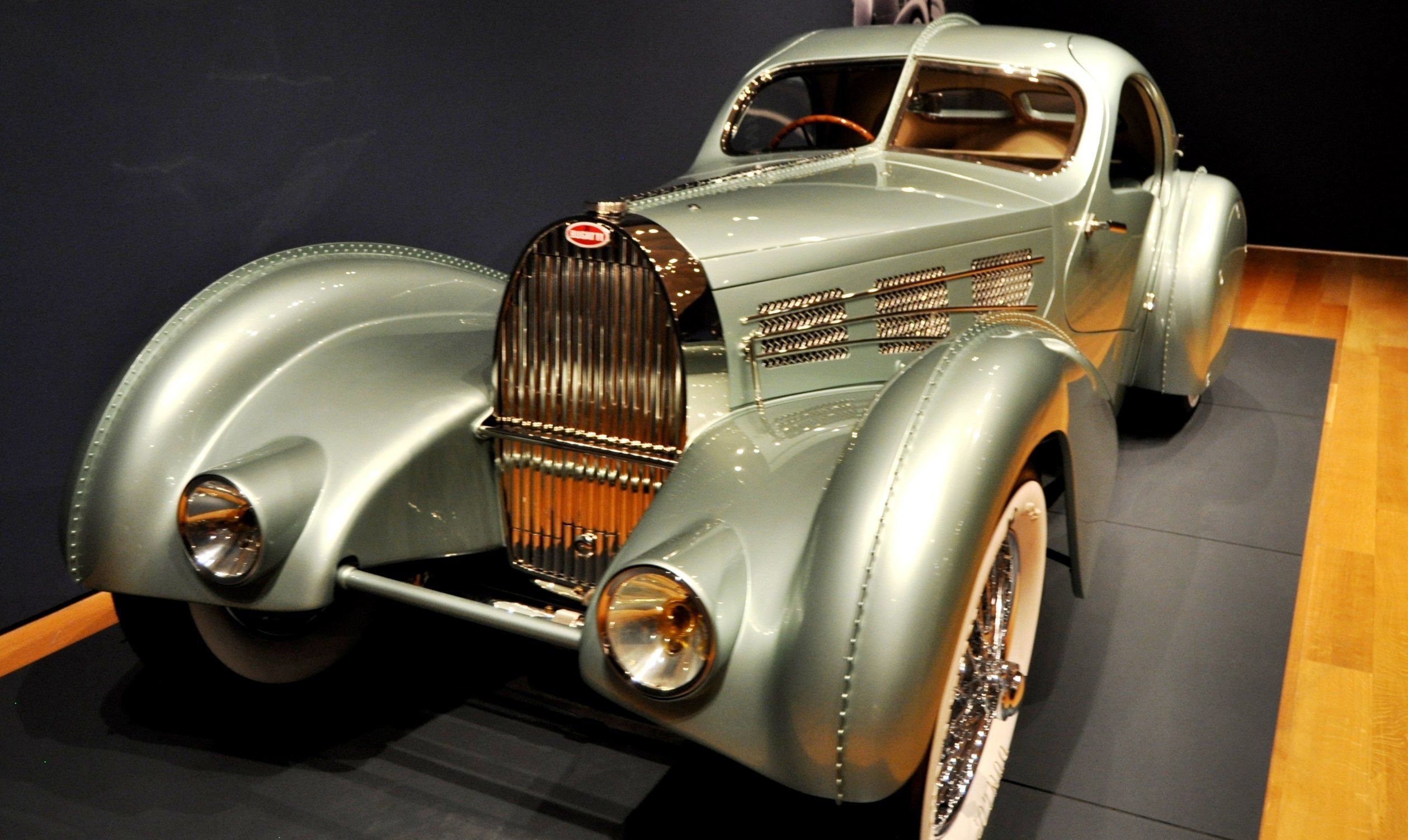
Bugatti Type 57 Aerolithe replica
Archie with eyes locked on the draped shape atop the raised platform waited in frozen anticipation. Jean Bugatti basking in the prideful gaze of his father grasped the edge of the black silk drape. With its flattering sheen the drape hugged the vehicle it hid like a sensuous gown clinging to a statuesque woman. With a gentle tug the drape fell away. Archie gasped. Before him stood a glorious vehicle worthy of all of his grandest dreams. He loudly lauded his creation. He boasted to all in ear shot including both Ettore and Jean Bugatti that his ideas have given them everything they needed to build this beautiful car. “The Romanian’s” disrespect cut both father and son like a knife. Blinded by his own arrogance Archie only saw his ticket to the glory and adulation he craved gleaming before him. For anyone else this 7th and reimagined Royale left no doubt as to the genius of Jean Bugatti.
Jean Bugatti’s 7th Royale’s flowing lines integrated the close coupled masculine strength of the Bentley Blue Train with the athletic grace of Bugatti’s Type 57 SC Atlantic. As well, it incorporated the raked windshield angle found in an earlier Jean Bugatti design, the Type 50 Coupé Superprofilée. Viewed with no frame of reference, the 7th Royale’s proportional perfection would scale to any size. That it accomplished such perfect visual balance on a wheelbase of 170 inches, if for no other reason, would merit its rightful place in the grand hall honoring great automotive designs.
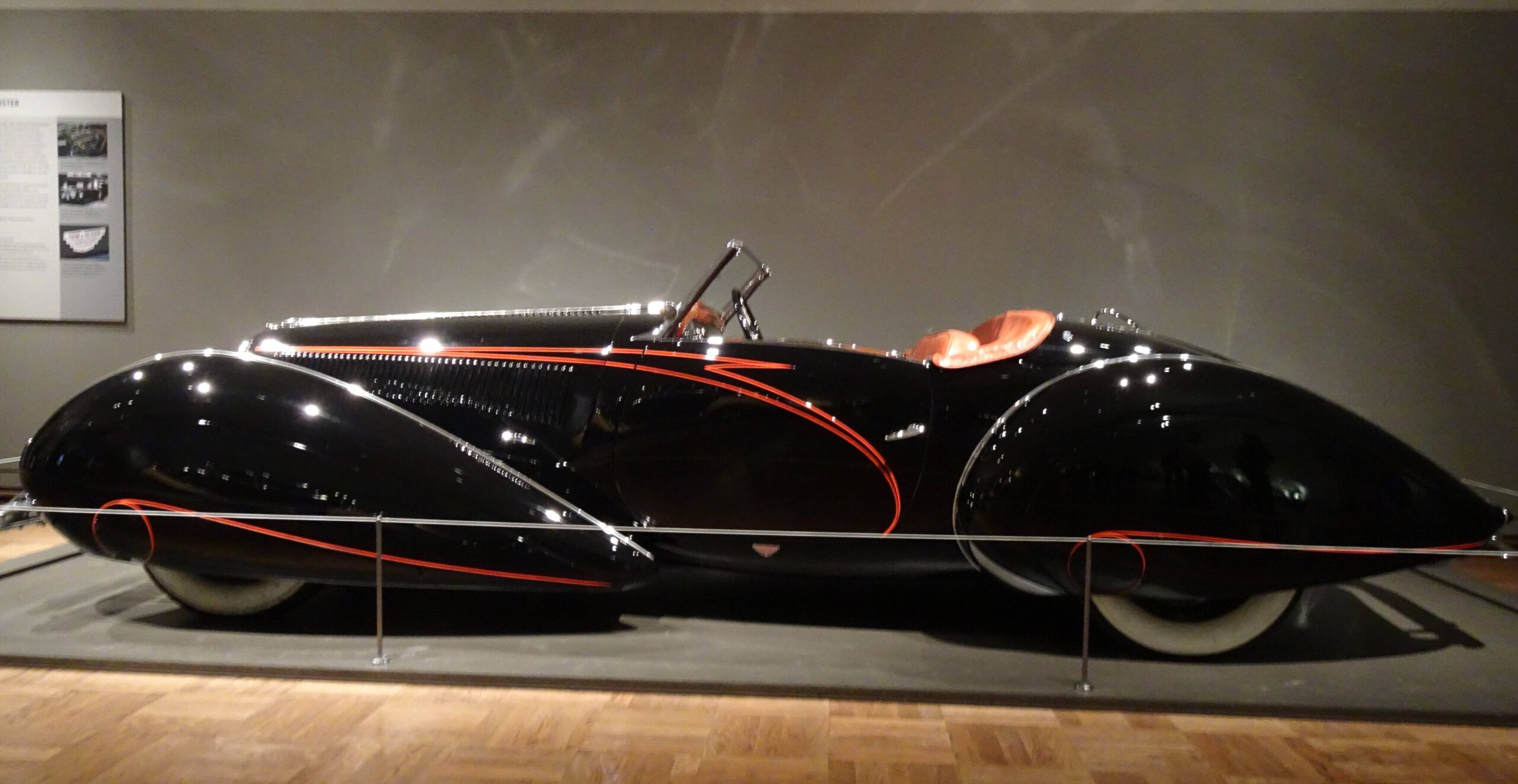
Delahaye 135
Jean’s reimagined Royale towered as a glorious sum far grander than any of the contributing iconic design themes that he drew upon including the Bentley Speed Six, Delahaye 135, Mercedes-Benz 540K Autobahn-Kurier and all of Bugatti’s prior works. The 7th Royale honored its Bugatti brand roots as well with the choice Crème de menthe green, the color of the iconic Bugatti Type 57 Aerolithe. Trimmed in black it made a proud statement of heritage. No less a statement of lineage evidenced itself with the re-imagined Royale’s riveted magnesium spine-like center exterior rib. An original Aerolithe feature, the spine resulted from the use of exceptionally light weight and strong but un-weldable magnesium panels. Magnesium while 75% lighter than steel unfortunately can ignite at welding temperatures. On his 7th Royale Jean made extensive use of magnesium in addition to aluminum resulting in a reduction in the final weight by over a ton.
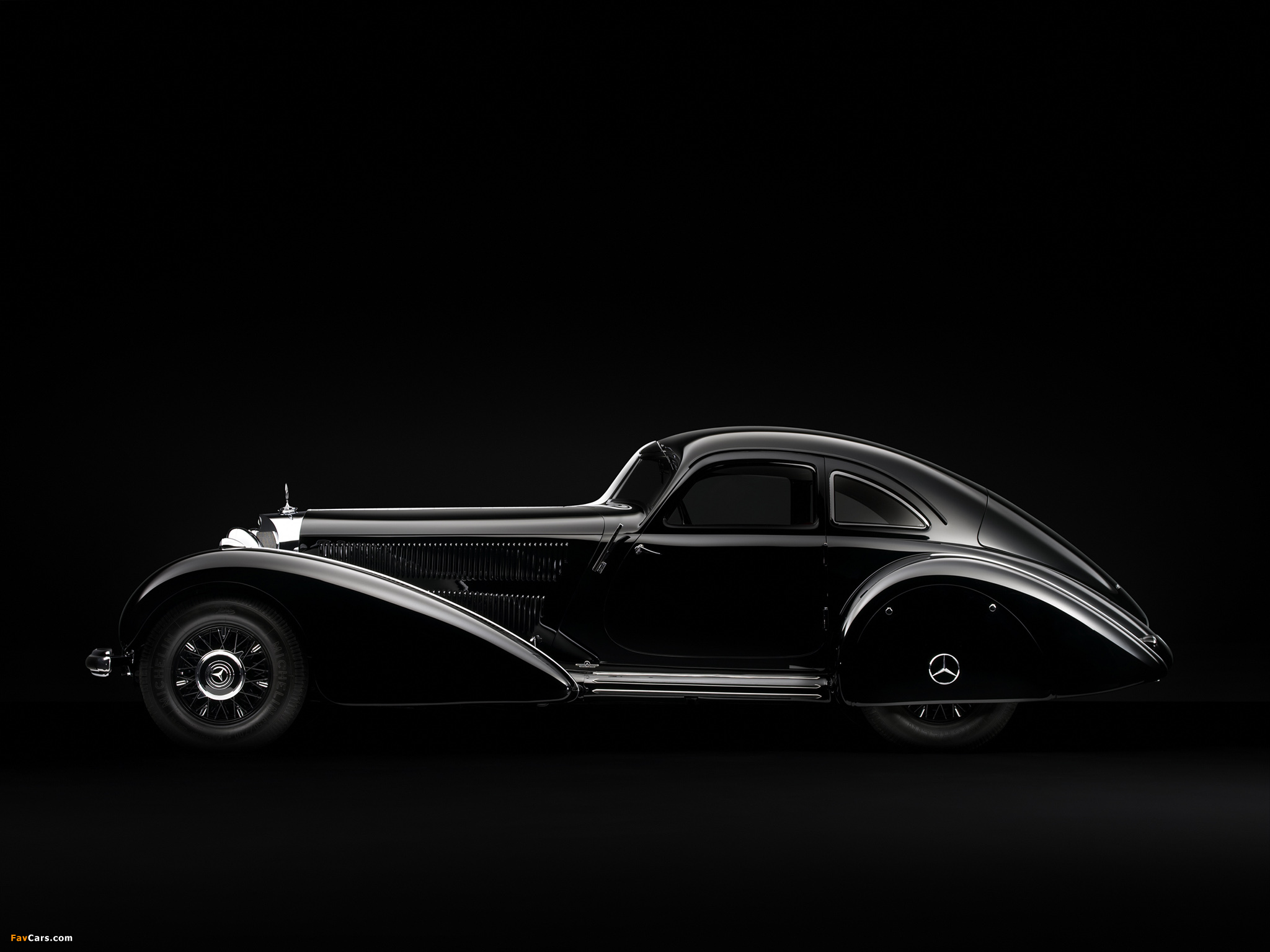
Mercedes-Benz 540K Autobahn-Kurier
No less beautiful an integration of leading edge technology, the reimagined Royale’s performance specifications set a bar that would not be achieved in production vehicles for decades. Power came by way of a supercharged 12.7-liter, dual-plug, 3-valve per cylinder, dual-overhead cam, inline 8-cylinder engine putting out in excess of 350 horsepower and over 900 pound-feet of torque.
Equally revolutionary, a strong, lightweight chassis complemented the reimagined Royale’s awesome power plant. Boasting hydraulic brakes, aluminum brake drums and an independent front suspension, it delivered handling that would equal that of much smaller and lighter competition vehicles. Race prepped by Bugatti, the reimagined Royale even featured integrated brackets mounted to the chassis to simplify jacking the car for tire changes.
Awash in self-congratulatory bliss, Archie both signed off on the completed project and ordered the expeditious shipment of this ticket to auto racing stardom to Estonia. A truck awaited in the Molsheim courtyard.

Bentley Speed Six Blue Train
Driven by one of the three Estonian language fluent mechanics who would service the Royale when it arrived in Estonia, the truck backed up to the dedicated building at Molsheim that housed the Romanian’s Royale. With a capacity of eight and a half tons, the Mercedes-Benz heavy duty hauler would accommodate most everything needed for the Tallinn start. Parts, tires, tools and of course the 7th Royale all sat ready for loading.
As well, a liberal application of Archie’s wealth and Third Reich connections would pave a smooth paperwork path to Estonia assuring that the big Mercedes truck would experience trouble-free border crossings. Archie obsession on the importance of secrecy evidenced itself in full bloom. He did not want some curious border guard exploring the contents or worse taking pictures resulting in a premature reveal of Archie’s glorious Bugatti. The truck had been outfitted with Ploesti Oil organization side markings and papers signed by authorities ensuring unchallenged passage at every border crossing along the planned route. As added insurance, Archie would accompany the truck with a bag full of various currencies and Nazi letters of passage to smooth any issues raised by local authorities. It reflected the values emphasized in an upbringing that emphasized the power of wealth rather than charm and grace. Archie had been groomed by arrogant parents to simply wield wealth as a master key for unlocking access to whatever, and not infrequently, whoever he wanted. The Depression provided a world that had transformed Archie’s access to wealth into an addictive drug that crippled any desire to exhibit social grace or even simple common decency.

Mercedes-Benz Type L
Armistice Day saw the big Mercedes-Benz truck depart the Bugatti complex on its long journey North. Anyone caring to notice might have thought it unusual that no one waved goodbye. Then again considering what the Bugatti’s had come to think of “the Romanian”, maybe not.
Slowly trudging north in the hard working but painfully slow Mercedes truck gave Archie plenty of time to fantasize about racing south in his stunning Royale on some of these very same roads, rough as they may be, to a victor’s glory in Monte Carlo. The months to the January 25th Monte Carlo Rally start could not past fast enough. Suddenly impatient, Archie scolded the driver for going so slow.
While “the Romanian’s” plans for glory filled his dreams, young Mihkel Oja’s future plans had no shape at all. He yearned to be a part of the Estonia people’s defense of their freedom but he did not want to bring the communist sympathizers wrath down upon his parents and their farm.
Hiding out in the secluded woodlands east of Tallinn, Mihkel helped his good friend Juri breed sled dogs. In the coming winter they would put the dog sleds to work delivering supplies to isolated outposts dotting the dense Estonian forest. Allowing himself a respite from his anger at and fears of the threats to his country, Mihkel had become quite fond of the Siberian Husky and Malamute sled dogs he helped raise and train. He marveled at their strength and stamina even in the most brutal of Estonia’s bitter weather conditions. 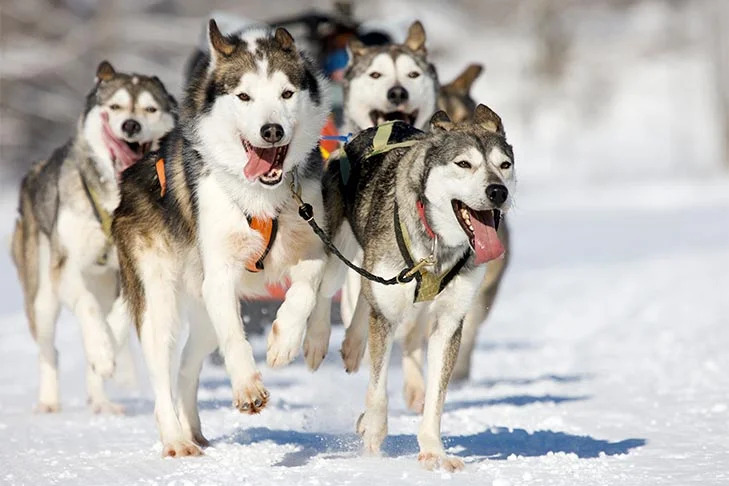 As for now, Mihkel immersed himself in learning the skills necessary to assemble and command sled dog teams in the brutal Estonian winters. Depending on the load, dog teams could range from six to eight dogs, more if needed. Mihkel had learned how to organize a good sled team. Leader dogs needed to be strong willed, fast and reliable to set the pace for the others to follow. After the leaders came the swing dogs with the responsibility to steer the team around turns and curves. Lastly the wheel dogs, located closest to the sled, possessed the superior strength to pull a sled out from deep snow. Mihkel had selected twelve dogs to train comprised of a mix of Malamutes and Siberian Huskies both male and female. He gave them names that suited their roles. Leaders included Maksim, Arri, Leenart and Aleksandra. His four nimble swing dogs had names of Anna, Laine, Sofia and Leks. Kalju, Markko, Mikk and Keert formed his cadre of powerful wheel dogs. With winter snows coming, training his team had given him both something for which to look forward and a distraction from the chaos that loomed on the horizon. To ensure that with the first decent snow fall he would be ready, Mihkel had been training his team using a wheeled cart. One day Juri offered him a test run. A local fishery had an order for a facility being built deep in the forest probably for the oil shale company. Unfortunately the fishery truck had broken down. Mihkel could deliver it. Mihkel jumped at the chance. He craved a little excitement and loved the idea of working the dogs. On a good surface his team could do 30 kilometers per hour. On rough roads maybe 9 or 10km/h.
As for now, Mihkel immersed himself in learning the skills necessary to assemble and command sled dog teams in the brutal Estonian winters. Depending on the load, dog teams could range from six to eight dogs, more if needed. Mihkel had learned how to organize a good sled team. Leader dogs needed to be strong willed, fast and reliable to set the pace for the others to follow. After the leaders came the swing dogs with the responsibility to steer the team around turns and curves. Lastly the wheel dogs, located closest to the sled, possessed the superior strength to pull a sled out from deep snow. Mihkel had selected twelve dogs to train comprised of a mix of Malamutes and Siberian Huskies both male and female. He gave them names that suited their roles. Leaders included Maksim, Arri, Leenart and Aleksandra. His four nimble swing dogs had names of Anna, Laine, Sofia and Leks. Kalju, Markko, Mikk and Keert formed his cadre of powerful wheel dogs. With winter snows coming, training his team had given him both something for which to look forward and a distraction from the chaos that loomed on the horizon. To ensure that with the first decent snow fall he would be ready, Mihkel had been training his team using a wheeled cart. One day Juri offered him a test run. A local fishery had an order for a facility being built deep in the forest probably for the oil shale company. Unfortunately the fishery truck had broken down. Mihkel could deliver it. Mihkel jumped at the chance. He craved a little excitement and loved the idea of working the dogs. On a good surface his team could do 30 kilometers per hour. On rough roads maybe 9 or 10km/h.
With a cold breeze swirling beneath azure skies Mihkel and his team of eight made good time. In great spirits as he approached the freshly constructed building, Mihkel, restless from his isolation, hoped to meet some fresh faces and hear some news and share some camaraderie. Two men in mechanics garb welcomed the delivery. Mihkel introduced himself. They did the same, sounding like native Estonians. Mihkel hungered for news from the outside. Despite the mechanics’ unspoken personal Nazi allegiances, the two men gave the boy free reign to share his thoughts. It did not take long to scratch his surface to reveal his proud support for Estonian independence and his notoriety with those he called Estonia’s enemies of freedom. The mechanics took note but did not challenge the boy. They might be in the need of more fish. Mihkel noted the passing of time and bid his new “friends” farewell. His dogs eager to run swept their lightened load through the forest and back to Juri’s.

